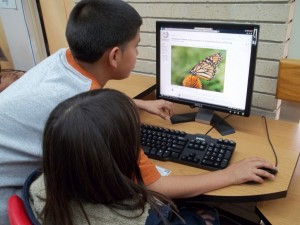I’ve been reflecting further on the frustrations with databases that I vented in my previous post. I realized that what is crystallizing for me is the point that…
Research tools are not about the tools. They are about the people who use them. Each student brings a human story and experience to their research process but most of all, they come to it as a person.
When you look at sites like Flickr or Instagram or Twitter or Tumblr, all of them center in some way around the person–the user. They are not just built for the information within them (although they have ways to access that). They are built to somehow represent, engage with, and be friendly to the user. And secondly…
Research tools are not about a 1.0 world.

Our students live in an interconnected, hyperlinked, search-engine suggestion, peer to peer assisted world. They share knowledge with one another and expect their tools to do that for them as well. They like websites that engage their curiosity, let them wander, promote what is most pertinent, use beautiful graphics that engage them, and allow them to share as well.
If research companies/tools want to be more relevant in the lives of our students, how can they be more personal, respond, engage students better? And how can they relate to the hyper connected world that the rest of the internet utilizes?
Research tools should be easy to use and access.
Google has proven how possible it is to have a beautiful, playful and clean interface when what’s behind it is a very complex operation. Their app? A quick installation and it works with lightning speed. Do beginning users really need to “know” what database they are choosing or use archaic (non natural) language to do their search? How can databases separate simple Googlish sorts of searches from more complicated ones so that the results mirror the language of the searcher?
Research tools can be geared to younger users without being insulting.
Databases designed for younger researchers don’t have to have cliched icons or overly childish and out of date images. Younger searches also enjoy beautiful design, clean layout, beautiful and sophisticated uses of color just like older researchers do.
Research tools for younger users need to not be an afterthought.
The biggest database companies are guilty of having interfaces for elementary-aged researchers that aren’t geared internally towards their customers. The results they return are often irrelevant or too complicated to wade through or not topical, the layouts are not sophisticated in design and appeal, and again, often the design of the database does not invite student curiosity and wonder.
Student researchers are not dedicated to the tool. They are dedicated to the answers.
We cannot assume as designers that every student researcher is a “researcher by trade,” but we need to understand them as occasional users, often ones with little expertise with a research tool. No matter how much librarians work with most students, the database format will not feel “native” to them and will only be a sidenote to their general research experience, most of which takes place on Google or Yahoo. Think of the names of many databases which are based on the company brand–a name that is meaningless to students. Why not employ the strategies of dot.com companies and find names that are catchy, appealing and use the nomenclature of the day. Unless your company name has enormous user identification (maybe Britannica), it comes across as schooly and loses it’s relevance and appeal for students.
It’s far past time to start redesigning for the curious, connected students in our libraries and classrooms.
What’s the view from their side of the table?
………………………………..
postscript: Thanks to George Couros –his very human centered tech keynote at the TCEA TecSig Fall Meeting yesterday reminded me what “it’s all about.”